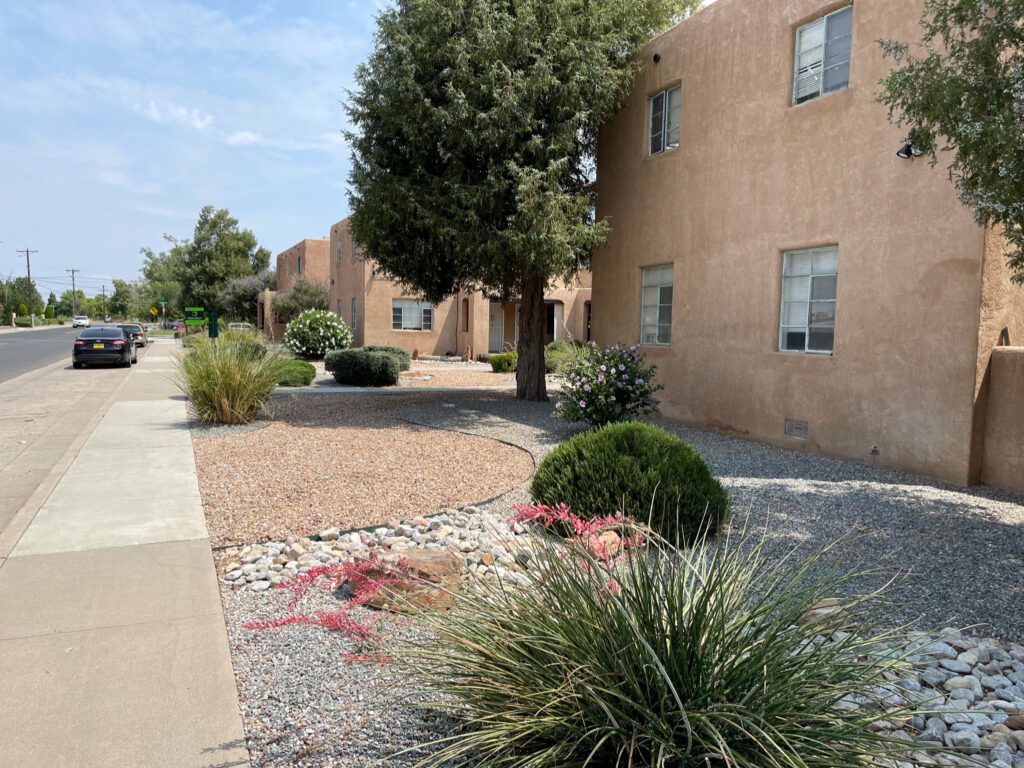How Do I Know If My Irrigation System Is Working Efficiently?

Drip irrigation system is one of a perfect way to maintain your garden and also help in water conservation.
Drip irrigation systems provide water directly to your plant`s roots, keeping them hydrated and also preventing water waste. But, like any system, from time to time, it can experience issues that compromise its efficiency.
When you start to notice problems with your drip irrigation, it’s important to correct them quickly so that your garden can thrive. With that said, we’ll look at the signs that you have an indicator of inefficiency in your system. But identifying these signals early on will help you intervene and not only addressing the issues but also will keep your plants healthy and your water consumption under control.
Repairing problems with your drip irrigation system benefits your plants and saves you money on water bills. Read on for tips on how to easily find and correct problems with your drip irrigation system so your garden will continue to thrive and work efficiently!
Understanding Drip Irrigation Systems
Drip irrigation tips: Systems that get water right to plant roots. This technique minimizes water usage by watering regions of interest — minimizing evaporation and runoff.
Drip systems consist of a network of hoses, pipes and emitters arranged at the base of plants. Water is released slowly and in a steady stream, helping it soak deeply into the soil.
These systems work well for gardens, flower beds and even potted plants. The moisture helps the plants grow well.
Another significant healthy advantage of drip irrigation system is that it reduces chance of over-watering and hence minimizes wastage of water. However, as a responsible system owner, you must be able to recognize the signs that your system may need repair, in order to keep your system running efficiently.
Common Signs of Drip Irrigation System Inefficiency
Knowing when your drip irrigation system is not working well can save you time, money, and water. Your system might need attention if you notice any of the signs below:
1. Uneven Water Distribution
One of the most obvious signs of a poor drip irrigation system of the unbalanced water distribution. When some plants receive too much water and others look dry, the system isOFF but needs a tweak. It may happen because of clogged emitters, improper positioning, or fluctuating water pressure.
If the flow seems uneven, the emitters may need adjusting. Emitters can become clogged or damaged and not allow proper water flow. You clean or replace them in accordance. Then, verify that the emitters are properly placed and clear of plant detritus or soil. Other plants may need more water, so tailor the system to meet each type’s specific needs.
Maintaining uniform water pressure is important too. If the pressure’s too low, the water won’t distribute evenly to all areas. A pressure regulator may help to allow consistent pressure throughout the system. Maintaining your system and regularly watching out for issues will make sure that your plants receive even, healthy water.
2. Unusually High Water Bills
An abnormally high water bill is another symptom of a failure in your drip irrigation system. If there is a sudden increase in the amount of water you use without a change in your watering habits, there may be a leak or another problem with the system.
Begin by doing a visual inspection of the system for any visible leaks or damaged lines. Tiny splits or tiny holes in the tubing can cause a lot of water loss over time. Replace any broken parts right away to stop water from being wasted.
Also inspect the system’s timer and settings. Incorrect configurations could make the system run for longer than they need to. Atmed it is used to be set according to your plants so that it should watering as per the season.
3. Water Ponding or Persistent Wetting Areas
Puddle or Permanent Dampness Spots in Your Garden — Pooling water or consistent moist areas in your garden would be a sure sign of inefficiency in your drip irrigation system. Reckon the ponds in specific locations can cause harm in the form of root rot, soil erosion, and even sprouting undesired fungi.
If you see this problem, first check that you are placing your drip lines and emitters properly. Make sure they are evenly distributed and do not cluster in one place. Overwatering can also lead to pooling, so check that the system’s schedule and flow rate are suitable for your soil type and the requirements of your plants.
Another frequent cause of pooled water is soil compaction that does not allow water to fill into the ground when rain falls. Aerate soil around your plants to help it absorb water better. This will allow more water penetration and less surface pooling.
4. Visible Plant Disease
Visible plant stress or disease is frequently an early indicator that there’s something amiss in your drip irrigation system. Leaves (if any) should be dark green, and the stems should have the strength of healthy stems. If you see wilting, yellowing or browning, your plants may suffer from inconsistent watering.
Here are a few common indicators to look out for:
- Curling, Wilted Leaves: means not enough water is getting to the roots.
- Leaves Turning Yellow: Overwatering or nutrient deficiencies.
- Stunted Growth: This could indicate that your plants do not have sufficient water or nutrition.
Make sure all the emitters are functioning properly and delivering water. Clogged emitters may cause uneven watering, which can stress plants. Getting rid of or out of these emitters can be a big difference. Also check the timer settings to ensure the system runs for the proper time period and delivers just the right amount of water.
5. Low Water Pressure
Low water pressure in your drip irrigation system can have a significant impact on its efficiency. If water isn’t flowing properly, your plants won’t get the moisture they need. The cause can be anything from a clogged filter to an issue with the main water supply.
Check these steps to see how to diagnose and fix low water pressure issues:
- Check Filters: Clean or replace if clogged.
- Check Emitters: Make sure they’re clear and working.
- Check Tubing and Connections: Inspect for leaks, bends, or blockages restricting the water flow.
Check the Main Water Supply: Ensure that the pressure from the source is enough. If it’s too high or too low, you may need to install a pressure regulator.
Your system should deliver water evenly and if you maintain good water pressure, your garden will be healthy.
6. Detecting and Fixing Clogged Emitters
Drip irrigation systems face the problem with clogged emitters. These tiny blocks make it hard for water to reach your plants. Detect clogged emitters and repair them.
Detection:
- Spot checks: Walk through your garden and look at the emitters. Emitters that show little or no water flow are clogged.
- Plants’ Health: Look for plants that appear dry or stressed in comparison with other plants. It could be a symptom of clogged emitters.
Fixes:
- Flush the System: Remove end caps and allow water to flow through to clean out any debris.
- Clean Emitters: Take them out and soak in water and vinegar to dissolve mineral build-up.
- 03 Use a needle or pin: Small clogs in the emitter holes can be gently poked through.
- Replace Emitters: If cleaning equipment doesn’t work, you may need to replace the emitters with new ones.
Keeping an eye on emitters, and regularly maintaining them, can prevent clogs, and help keep your system running smoothly to deliver adequate water to every plant.
7. Leaks in the Drip Lines
Drip lines dripping is a major problem facing drip irrigation systems. The leaks might be from minute holes or cracks in the tubes. Responses help overky make these leaks on your systems.
First start searching for wet spots along the drip line. When you notice pooling water where it shouldn’t be, you probably have a leak. And look for visible damage like cracks or holes.
If you have a leak, all you need is a repair coupling or some silicone tape to fix it. Remove the segment of piping holding the leak, and connect the two pieces via the coupling. For smaller leaks, wrapping silicone tape tightly around the spot may be just as effective.
8. Faulty Controllers and Timers
Drip irrigation involves controllers and timers. They assist you in planning when and how much water your plants get. Occasionally, these devices experience a glitch that results in your system over- or under-water your plants.
Verify the settings on your timers and controllers. Note that they match your watering needs. If the times seem incorrect, reset and reprogram the device. If this doesn’t resolve the problem, you might need a new controller or timer.
Routine replacement and inspection of these components help keep your drip irrigation system functioning as it should, helping keep your plants healthy and your water bill low.
Examining Drip Emitters for Efficiency
Water is the main element of your irrigation system. They must work effectively to provide your plants with the appropriate quantity of water. Over time, these micropieces can become congested or break, compromising their efficiency.
First, determine if the emitters are blocked or broken. Water and a small brush will clean up the emitters. If, after cleaning, they’re still not functioning properly, replace them. If you see that the water is not coming out evenly you are lucky, that won’t be contributing to good growth.
You just replace broken or old emitters with new ones, so your plants receive water precisely where they need it.
How Sprinkler Drainage Solutions May Save You
There are many innovative drip irrigation products available through Sprinkler Drainage Solutions. They can also help you identify and repair leaks, clean or replace emitters, and ensure your controllers and timers are functioning properly.
Their team are experts in error diagnosis. They’ll ensure your plants get the right quantity of water and that your system operates properly. They have the expertise to fix it, be it small or big problem.
Not only can they fix problems, but they can also tell you how to maintain your system to avoid having similar issues in the future. This allows you to maximize your return on investment.
Lush Landscape, Low Water Bill – Drip Irrigation Efficiency
Maintaining your drip irrigation system is essential to a healthy garden and lower water bills. Everything from fixing leaks in the drip line to checking emitters to making sure your controllers and timers are functioning goes into this process. Watching, and waiting, doing regular checks and fixing as soon as things are a bit off, can do wonders for efficiency, and plant health.
Call R & S Landscaping — If you need professional drip irrigation system installation or services! If you have a problem with your drip irrigation system in Albuquerque, we can help. Reach out for a consultation today and start your journey towards a healthier garden and a properly functioning irrigation system. Your plants will thank you!
